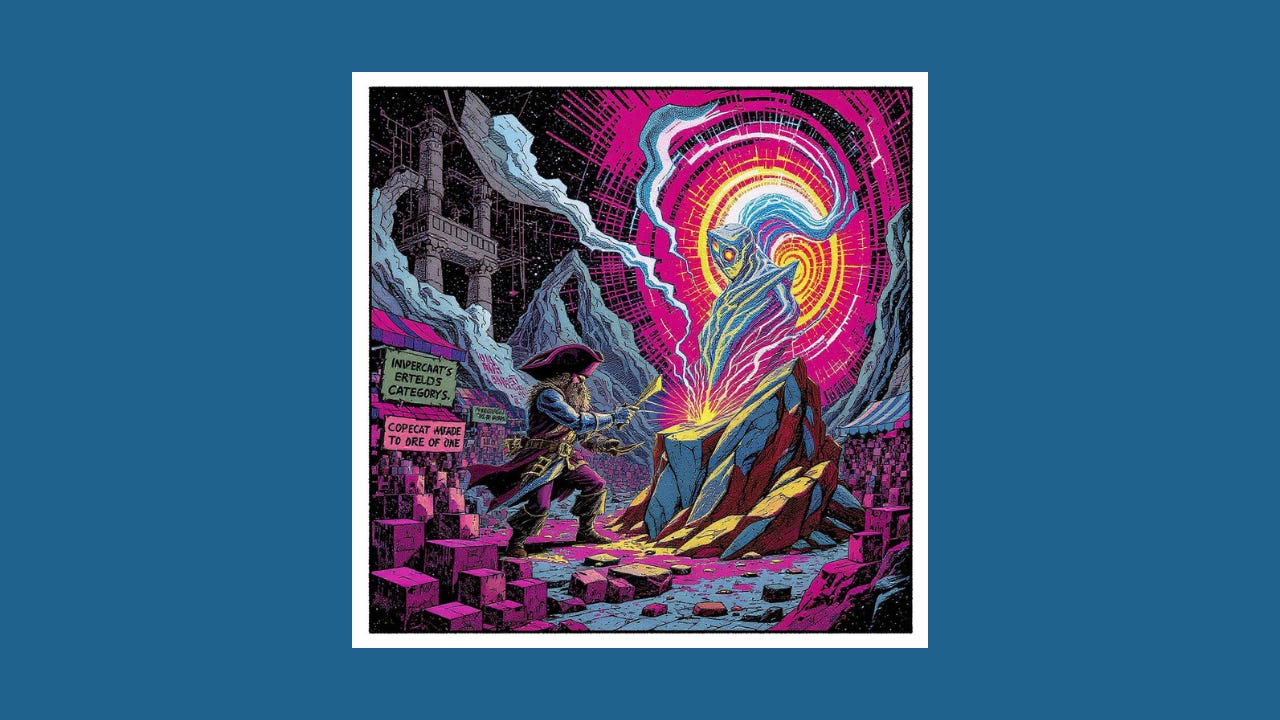The best product doesn’t always win, except when it follows this Category Design principle
Designing a perfect product is not the path to exponential success.
This is a 🏴☠️ Founding Members–Only 🏴☠️ post. Founding Members get access to our private AI Librarian, actionable insights, full audiobook library, access to 100+ mini-books, and more. See the Founders Deck here
Dear Friend, Subscriber, and Category Pirate,
This founder’s post squashes a common product myth.
Many entrepreneurs, executives, and investors think “the best product wins.” And the path to creating a “winning” product is:
Step 1: Launch a Minimum Viable Product
Step 2: Chase demand and prove Product-Market Fit
Step 3: Give users the ability to invite their friends and, wabam, Product-Led Growth
But this is not the path to exponential success.
We’re here to remind you why.
The Best Product Doesn’t Always Win
The phrase, “The best product,” is ironic.
“Best” in relation to… what?
(Other products?)
Most entrepreneurs, executives, and investors don’t realize what they’re saying when they say, “The best product.” These 3 words root their thinking to “what is,” and trick them into thinking their job is to FIT their product better into an existing market. But no legendary company (ever, in the history of ever) created a product that FIT into an existing category.
There was no “video doorbell” category before Ring.
The “hobbyist drone” category didn’t take off before DJI.
The “ride-sharing” category didn’t exist before Uber.
To successfully differentiate yourself, you have to reject “what currently exists,” and evangelize a NEW and DIFFERENT way of doing things.
You have to take a risk.
When you assume “the best product wins,” you are making the assumption the product will FIND its place in the world.
But why take that chance?
If you’re going to invest years (or decades) of your life building a product you believe will lead to a legendary outcome, why wouldn’t you give your product the best chance for success? Why wouldn’t you invest as much time, energy, and resource into Framing, Naming, and Claiming what your product does for the world as you do building the product itself? Why assume customers are just going to “get it?”
Unfortunately, entrepreneurs do this every single day.
They design a beautiful website. They launch a demo video. And then they sit back. “We’ve built an unbeatable product,” they say. And then they wait for customers to “get it” on their own.
They assume their product will find its place in the world.
One of the biggest tragedies in business is when a legendary breakthrough fails to make the difference it could have because it failed to make its place in the world.
That happens for a few reasons:



